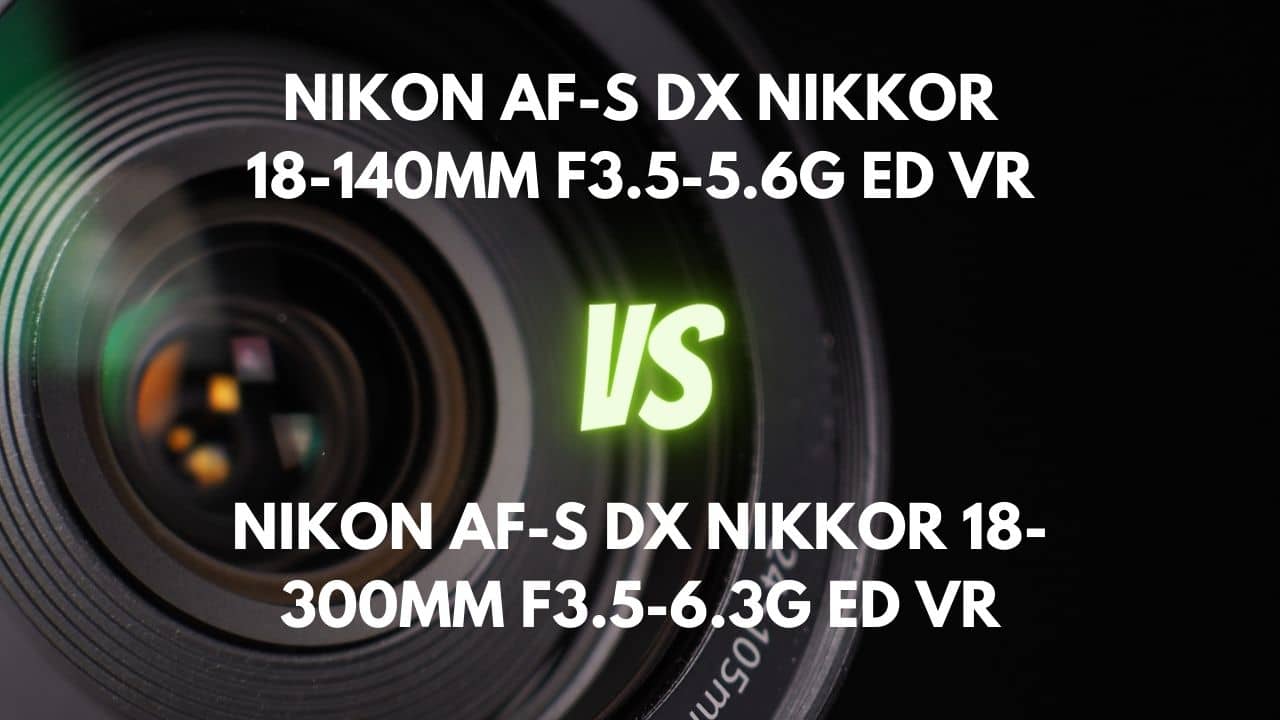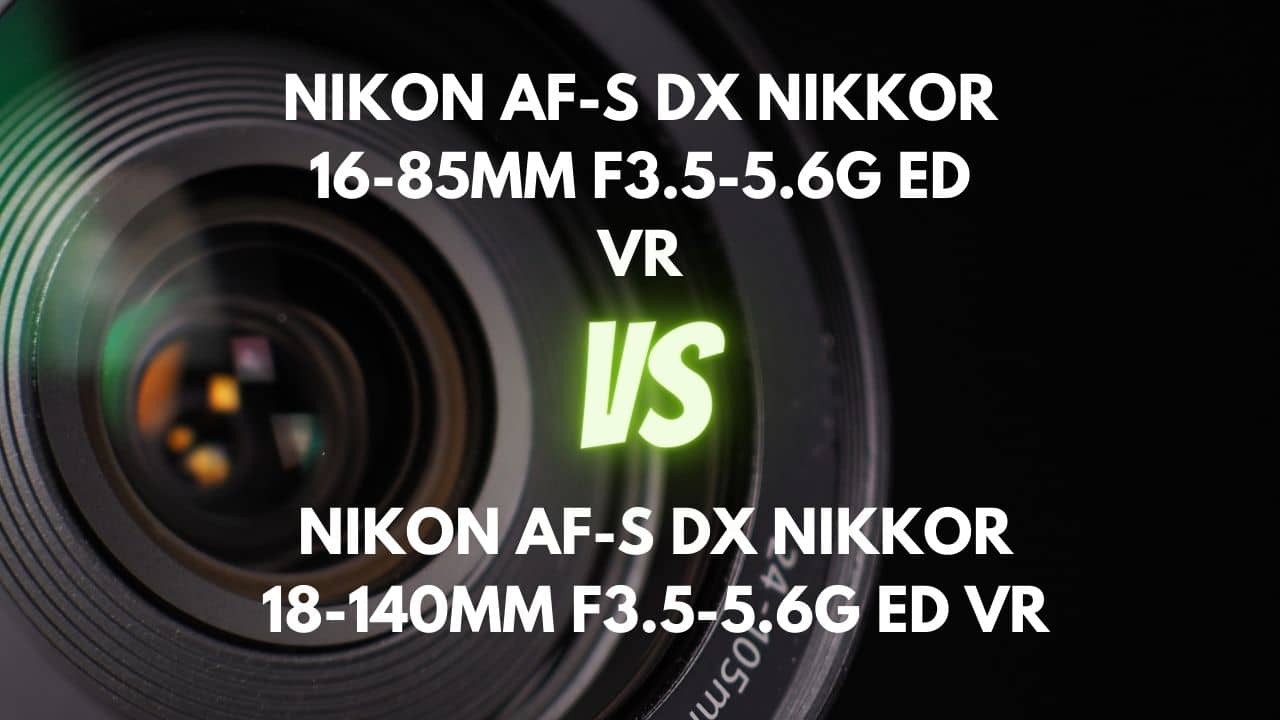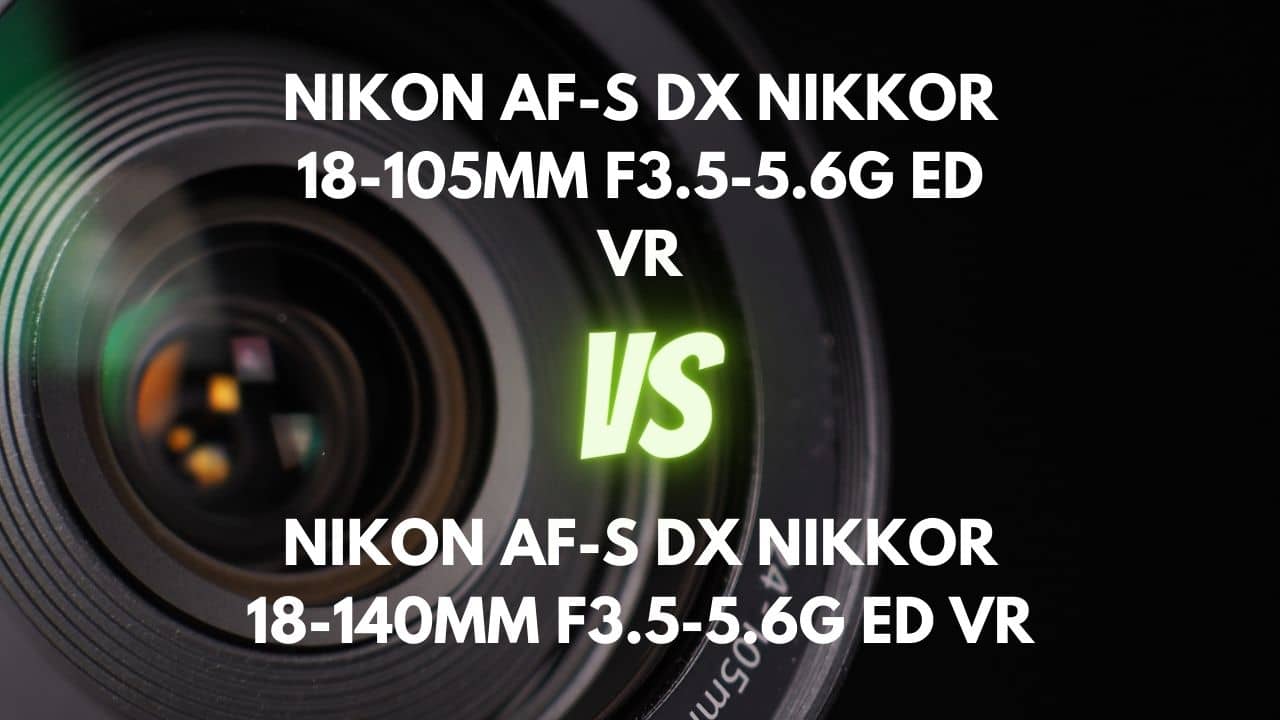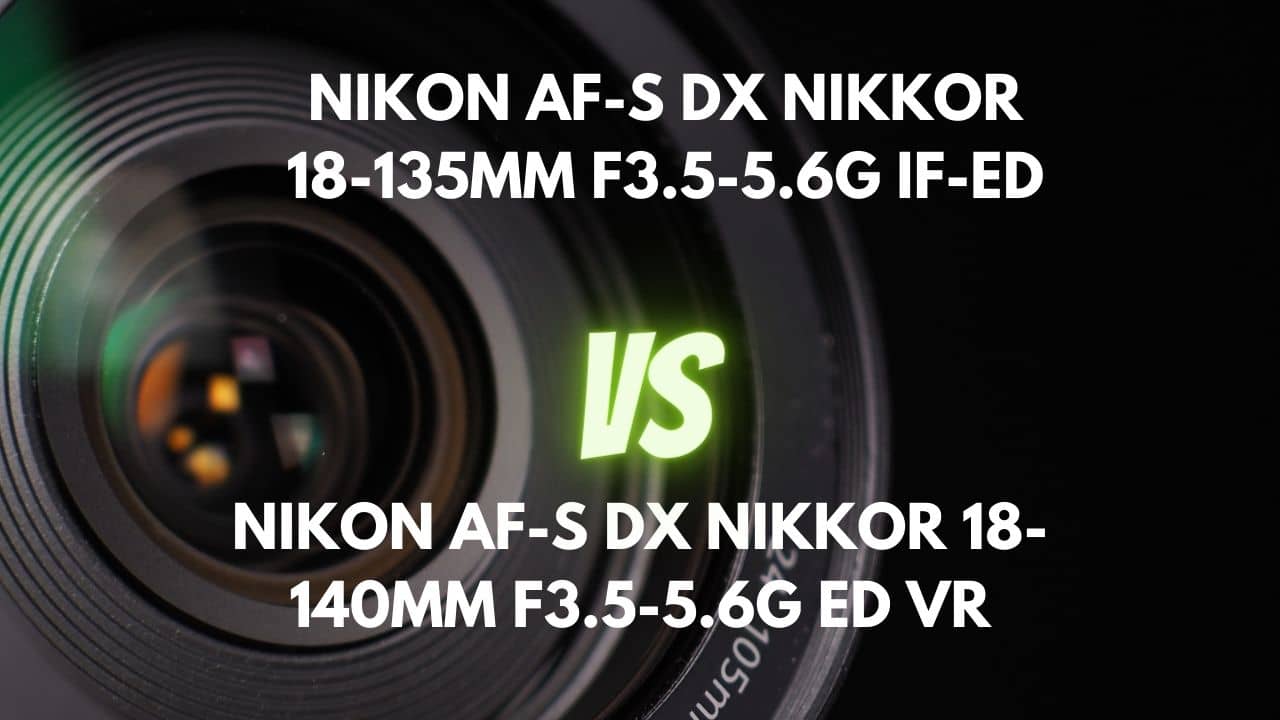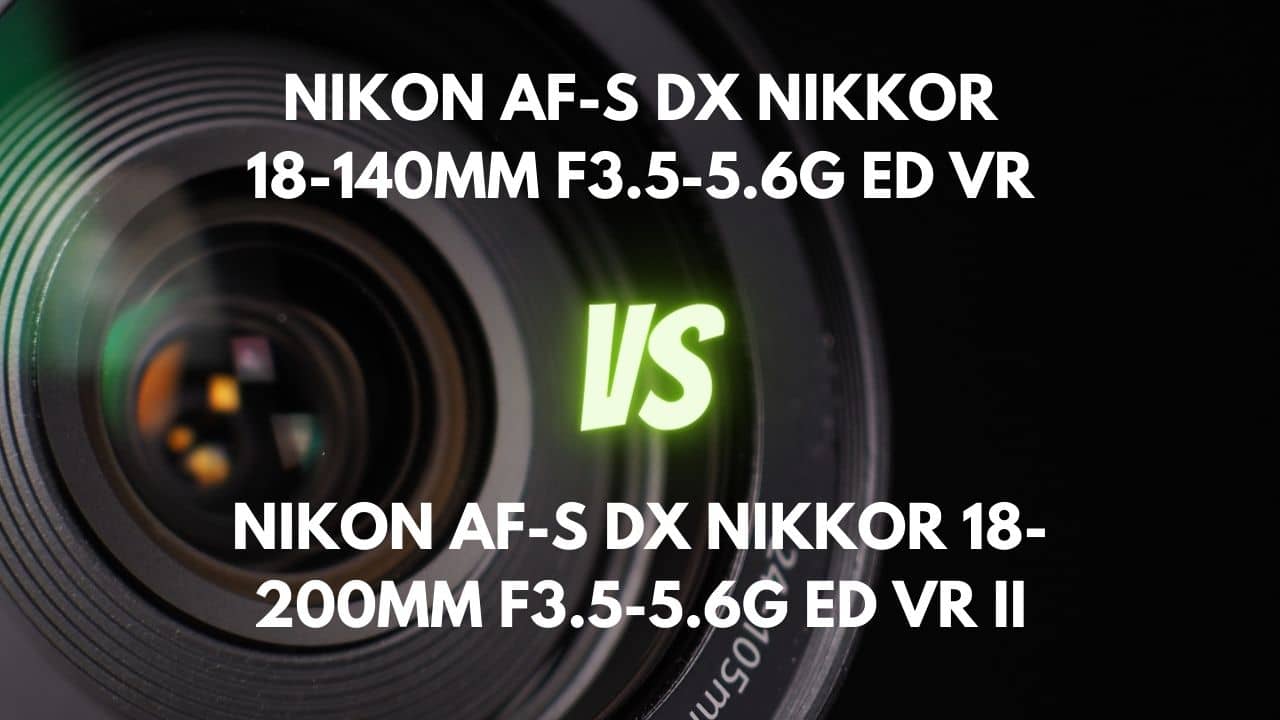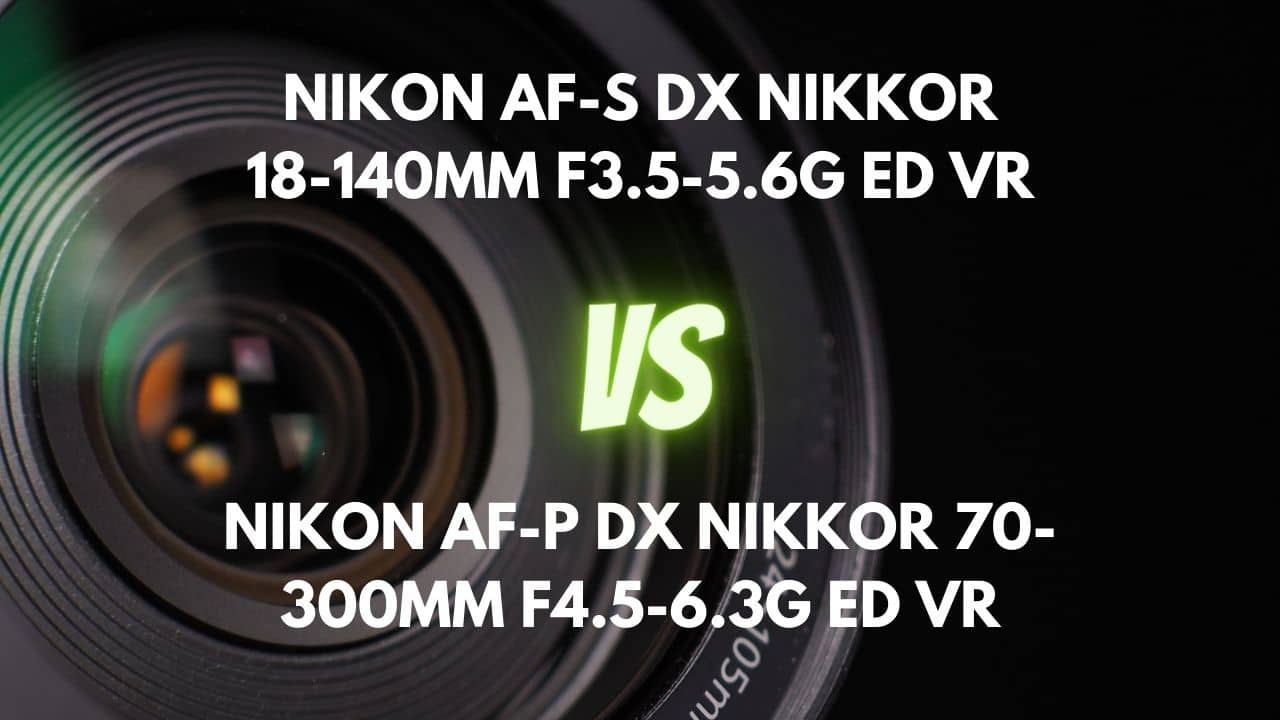Are you a photography enthusiast looking to capture the perfect shot in various settings, from sweeping landscapes to intimate portraits? If so, you’re probably considering investing in a versatile, high-quality lens that can keep up with your creative vision. Look no further!
In this article, we’ll be diving deep into a comprehensive comparison of two popular Nikon lenses, the Nikon DX 18-70mm f/3.5-4.5 and the Nikon DX 18-140mm f/3.5-5.6, to help you make the best choice for your photography needs.
We understand that every photographer has unique preferences and requirements, and these two lenses cater to different styles and genres of photography. Whether you’re a landscape lover aiming for crisp, vibrant images or a portrait aficionado looking for smooth background blur, we’ve got you covered.
By comparing essential aspects such as maximum aperture, focal range, sharpness, weather sealing, and more, we’ll provide valuable insights and benefits that will guide you to the perfect lens for your specific needs.
So, buckle up, and let’s embark on an exciting journey through the world of photography as we explore the strengths and weaknesses of these two remarkable lenses, helping you unlock your full creative potential.
Overview
| Nikon AF-S DX NIKKOR 18-70mm F3.5-4.5G IF-ED | Nikon AF-S DX NIKKOR 18-140mm F3.5-5.6G ED VR | |
|---|---|---|
| Max Aperture | F3.5-4.5 | F3.5-5.6 |
| Aperture Type | Variable | Variable |
| Focal Range (mm) | 18-70 | 18-140 |
| Max Format | APS-C / DX | APS-C / DX |
| Zoom Ratio (X) | 3.9 | 7.8 |
Comparing the Nikon DX 18-70mm f/3.5-4.5 and Nikon DX 18-140mm f/3.5-5.6, both have variable apertures, which means the maximum aperture changes as you zoom in or out.
The 18-70mm lens has a maximum aperture of f/3.5-4.5, while the 18-140mm lens has a maximum aperture of f/3.5-5.6. This indicates that the 18-70mm lens can allow more light to enter the camera at its maximum zoom, offering slightly better low light performance and shallower depth of field compared to the 18-140mm lens. Both lenses have an APS-C / DX format, which means they are designed for crop sensor cameras.
The 18-70mm lens, with its wider maximum aperture, may provide better image quality. However, the 18-140mm lens offers a more extended focal range, which gives you greater versatility in framing your shots. This can be particularly useful for travel, events, or sports photography, where you may need to switch between wide-angle and telephoto perspectives quickly.
In summary, the 18-70mm lens has an advantage in terms of maximum aperture, which can lead to better low light performance and image quality. However, the 18-140mm lens offers a broader focal range, making it more versatile for various photography genres and situations. Your choice ultimately depends on your specific needs and preferences. If low light performance and image quality are your priorities, the 18-70mm lens might be the superior option. However, if you value versatility and a broader focal range, the 18-140mm lens could be a better fit.
Design and Ease of Use
| Nikon AF-S DX NIKKOR 18-70mm F3.5-4.5G IF-ED | Nikon AF-S DX NIKKOR 18-140mm F3.5-5.6G ED VR | |
|---|---|---|
| Diameter x Length (mm) | ⌀73×75.5mm | ⌀78×97mm |
| Weight (gr) | 390 | 490 |
| Filter Thread (mm) | 67 | 67 |
| Weather Sealing | No | No |
| Zoom Method | Rotary (extending) | Rotary (extending) |
| Distance Scale | Yes | No |
| DoF Scale | No | No |
| Hood Supplied | Yes | No |
| Hood Code | HB-32 | HB-32 |
Comparing the Nikon DX 18-70mm f/3.5-4.5 and Nikon DX 18-140mm f/3.5-5.6 based on their physical characteristics, the 18-70mm lens has a smaller diameter and length (⌀73×75.5mm) compared to the 18-140mm lens (⌀78×97mm). This makes the 18-70mm lens more compact and easier to carry around, which can be beneficial for photographers who prioritize portability.
Additionally, the 18-70mm lens is lighter, weighing 390 grams, whereas the 18-140mm lens weighs 490 grams. A lighter lens can make your camera setup feel more balanced and less front-heavy, leading to increased comfort and ease of handling.
Both lenses feature a rotary (extending) zoom method, which means the lens physically extends when you zoom in or out.
While this design is generally simpler and potentially more affordable than an internal rotary zoom, it can make the lens more vulnerable to dust, moisture, and other elements due to the difficulty in achieving effective weather sealing. The extending design may also require more effort to maintain stability during shooting, as the camera’s balance changes while zooming.
In summary, the 18-70mm lens has an advantage in terms of size and weight, making it more portable and potentially easier to handle. However, both lenses share the same rotary (extending) zoom method, which can impact weather sealing and balance during shooting.
If portability and ease of handling are your priorities, the 18-70mm lens is the superior option. However, if you require a more extended focal range and are willing to carry a larger and heavier lens, the 18-140mm lens could be a suitable choice.
Lens Mount and Barrel
When comparing the Nikon DX 18-70mm f/3.5-4.5 and Nikon DX 18-140mm f/3.5-5.6 based on their lens mount and barrel construction, we can see some key differences.
Starting with the 18-70mm lens, its lens mount is made of metal and features a rubber sealing gasket, which provides added protection against moisture and dust.
This is an unusual feature for a lens in its price range. The lens barrel of the 18-70mm lens is constructed from high-quality plastics with a slightly textured finish. The barrel extends by 1.5 inches at 70mm and rotates slightly during zoom, requiring readjustment of filters if used.
On the other hand, the 18-140mm lens has a metal lens mount but lacks weather sealing, making it less resistant to moisture and dust than the 18-70mm lens.
The lens barrel is made mostly of polycarbonate plastic, featuring a textured rubber grip on the zoom ring and a narrower, ridged rubber grip on the manual focus ring. The lens extends by just over 50mm when zooming from 18mm to 140mm, with the inner barrel moving smoothly and the rear group of elements moving about 3cm as the focal length changes.
In conclusion, if you prioritize weather sealing, the 18-70mm lens may be the superior choice. However, if you prefer a lens with a longer focal range and are willing to forego weather sealing, the 18-140mm lens could be the better option.
Weather Sealing
When comparing the weather sealing of the Nikon DX 18-70mm f/3.5-4.5 and Nikon DX 18-140mm f/3.5-5.6, there are noticeable differences between the two.
The 18-70mm lens offers some level of weather sealing with a gasket around the lens mount, providing protection against moisture and dust. However, it lacks internal seals at the rings, switches, and front of the barrel, which might limit its performance in more challenging environments.
In contrast, the 18-140mm lens does not have any weather sealing. It lacks both a gasket at the lens mount and internal seals at the rings, switches, or front of the barrel. There is also no fluorine coating on the front element. This makes the lens less suitable for use in harsh weather conditions or environments with high amounts of moisture and dust.
Weather sealing is an essential feature for photographers who often shoot in various weather conditions, as it provides protection against dust, moisture, and light water splashes. Fully weather-sealed lenses offer better durability and performance in challenging environments, while non-sealed lenses may require extra care.
In conclusion, the 18-70mm lens offers superior weather sealing compared to the 18-140mm lens, making it a better choice for photographers who frequently shoot outdoors or in unpredictable conditions. However, if weather sealing is not a top priority for your photography needs, the 18-140mm lens might still be a suitable option.
Rings
Comparing the rings of the Nikon DX 18-70mm f/3.5-4.5 and Nikon DX 18-140mm f/3.5-5.6, we can identify some notable differences in ergonomics, control, and design.
The 18-70mm lens features a thin focus ring with no distinguishing features and a rubberized, large zoom ring. While the texture on the rings could be improved, users will likely adjust to it over time. The zoom ring is quite stiff and not fluid, which might affect precise control.
The barrel extends during zooming, potentially requiring filter readjustments. However, the focus ring provides a reasonable amount of resistance. The lens has a distance scale but lacks depth-of-field or infrared markings and a hyperfocal point marking.
On the other hand, the 18-140mm lens has a zoom ring and a focusing ring with thick, textured rubber grip bands for better ergonomics. The zoom ring has a nice resistance and is well-damped, offering more precise control. The focusing ring has a long throw but doesn’t provide much tactile feedback. The lens lacks windowed distance scale or depth-of-field indicators and has no extension lock switch on the zoom ring.
Switches/Buttons
Examining the switches and buttons on both the Nikon DX 18-70mm f/3.5-4.5 and Nikon DX 18-140mm f/3.5-5.6, we can observe differences in functionality and control.
The 18-70mm lens features a single Manual Focus button on its left side, which works in two positions: M/A (autofocus with manual override) and M (manual focus only). This minimalistic approach may appeal to some users, but it lacks additional controls.
In contrast, the 18-140mm lens has two control switches located on its left side. One switch allows users to enable or disable autofocus (A or M), providing greater control over focus settings. The other switch enables or disables vibration reduction (ON or OFF), offering an additional layer of functionality to improve image stability. The aperture control is managed through a mechanical lever, ensuring precise adjustments.
In conclusion, the 18-140mm lens offers superior switches and buttons, with greater control over autofocus and vibration reduction settings. This makes it a more versatile and user-friendly option compared to the 18-70mm lens. However, photographers who prefer a simpler interface with fewer controls may still find the 18-70mm lens suitable for their needs.
Filter Thread
When comparing the Nikon DX 18-70mm f/3.5-4.5 and Nikon DX 18-140mm f/3.5-5.6 based on their filter threads, we can observe certain differences in terms of construction and usability.
The 18-70mm lens has a 67mm filter thread size made of high-quality plastic. Its internal focusing mechanism ensures that the front element does not rotate during focusing, making it compatible with graduated and polarizing filters. However, the 67mm diameter may make filters more expensive, particularly circular polarizers, and could necessitate purchasing step-up rings for larger filter sizes.
On the other hand, the 18-140mm lens features a metal 67mm wide filter thread. This lens accepts 67mm diameter attachments and does not rotate during focus or zoom operation, making it user-friendly with filters like graduated neutral density filters and polarizers. The front element is relatively flat and sits just behind the filter ring, while a small indicator mark on the outer edge of the filter ring guides users when attaching the optional bayonet-style lens hood.
In conclusion, the 18-140mm lens offers a superior filter thread design due to its durable metal construction. While the 18-70mm lens also has a non-rotating front element during focusing, its plastic construction makes it less ideal in comparison.
Lens Hood
Considering both the Nikon DX 18-70mm f/3.5-4.5 and Nikon DX 18-140mm f/3.5-5.6 have the same model of lens hood, their features and functions are essentially identical.
The petal-shaped hood is made of plastic and has a bayonet mount, allowing it to be reversed onto the lens for storage. The hood offers a degree of shading for the front element and serves the purpose of preventing lens flare and protecting the lens from impacts.
The only difference between the two lenses in terms of the lens hood is that the 18-70mm lens comes with the hood included in the standard package, while the 18-140mm lens requires a separate purchase for its lens hood.
Given this information, neither lens has a superior lens hood, as they share the same model. However, the 18-70mm lens offers a more convenient package as the lens hood is already included, saving users the need for an additional purchase.
Focusing and Optical Stabilization
| Nikon AF-S DX NIKKOR 18-70mm F3.5-4.5G IF-ED | Nikon AF-S DX NIKKOR 18-140mm F3.5-5.6G ED VR | |
|---|---|---|
| Autofocus | Yes | Yes |
| AF Motor | Silent Wave Motor | Silent Wave Motor |
| Rotating Front Element | Does not rotate on focusing | Does not rotate on focusing |
| Min Focus Distance | 0.38m | 0.45m |
| Max Magnification (X) | 0.16 | 0.23 |
| Full-Time Manual Focus | Yes | Yes |
| Focus Method | Internal | Internal |
Focusing Performance
When comparing the focusing performance of the Nikon DX 18-70mm f/3.5-4.5 and Nikon DX 18-140mm f/3.5-5.6, both lenses feature an ultrasonic Silent Wave Motor for fast, quiet, and almost silent autofocus operation. They perform well in single-servo autofocus and continuous autofocus modes, and both lenses allow manual focus override by simply turning the focus ring, providing a smooth focusing experience.
The 18-70mm lens offers excellent autofocus performance, with quick initial autofocus acquisition, and outstanding performance in bright light situations. In low-light situations, the lens may lag slightly, especially at the telephoto end due to its maximum aperture of f/4.5 at 70mm. However, it is still capable of decent performance indoors under reasonable lighting. The thin focus ring provides a good amount of resistance for fine adjustments, and focus breathing is not a significant concern.
The 18-140mm lens also delivers a reliable autofocus experience, but it does exhibit focus breathing, with the image getting smaller as focused more closely, especially at the long end of the zoom range. Like the 18-70mm lens, it has an internally focusing design, ensuring the length remains constant and the front element does not rotate during focusing.
In conclusion, both lenses offer solid focusing performance for various shooting situations. The 18-70mm lens has a slight edge in low-light performance and minimal focus breathing, making it an excellent choice for photographers who prioritize these aspects. However, the 18-140mm lens also provides a reliable and smooth focusing experience, suitable for most situations, but it may require some attention to focus breathing when shooting at the telephoto end of the zoom range.
Optical Stabilization
The Nikon DX 18-70mm f/3.5-4.5 lacks optical stabilization, making it essential for photographers to use proper camera-holding techniques and, if necessary, a tripod or other support to avoid camera shake at slower shutter speeds, especially at longer focal lengths.
On the other hand, the Nikon DX 18-140mm f/3.5-5.6 is equipped with Nikon’s vibration reduction (VR) technology, compensating for hand-held shake up to 4 f-stops. The stabilization slider has two positions: on and off. The built-in VR stabilization is efficient, enabling photographers to shoot hand-held at slow shutter speeds, such as 1/15 second, at the 140mm focal length and still get roughly half of the shots taken sharp.
Optical stabilization is not as essential but can be beneficial in certain situations, such as low-light conditions, slower shutter speeds, or video recording. Many modern cameras offer in-body image stabilization (IBIS), which can effectively minimize the effects of camera shake, even if the lens itself doesn’t have built-in optical stabilization.
In conclusion, the 18-140mm lens with its built-in VR technology provides superior optical stabilization compared to the 18-70mm lens, which lacks this feature. This advantage makes the 18-140mm lens more versatile for various shooting situations, such as low-light conditions and handheld photography at slower shutter speeds.
Image Quality
| Nikon AF-S DX NIKKOR 18-70mm F3.5-4.5G IF-ED | Nikon AF-S DX NIKKOR 18-140mm F3.5-5.6G ED VR | |
|---|---|---|
| Special Elements | 3x ED glass elements and 1x aspherical lens element | 1 ED (extra-low dispersion) glass element, 1 aspherical lens element |
| Diaphragm Blades | 7 | 7 |
| Circular Aperture | Yes | No |
Aberration
The Nikon DX 18-70mm f/3.5-4.5 demonstrates well-controlled chromatic aberration throughout its focal length range, with only minimal visible issues in high contrast regions towards the edges of the frame at either end of the zoom.
In contrast, the Nikon DX 18-140mm f/3.5-5.6 exhibits chromatic aberration that is more noticeable than in previous Nikon offerings. However, this is generally not objectionable, with the corners of test images showing slight dark blue fringing around areas of high contrast. As for coma performance, the 18-140mm lens excels, showing no evidence of smeared blobs around bright points of light, even in the corners of the image.
Chromatic aberration occurs when a lens is unable to focus all colors of light at the same point, resulting in color fringing in high contrast areas. Coma is another type of optical aberration that causes bright points of light to appear elongated or distorted, especially towards the edges of the frame.
In conclusion, the 18-70mm lens offers superior control over chromatic aberration compared to the 18-140mm lens. However, the 18-140mm lens has excellent coma performance. When considering aberration performance, the 18-70mm lens might be a better choice for those who prioritize minimized chromatic aberration. On the other hand, the 18-140mm lens is a strong contender for those who value coma performance, particularly when shooting images with bright points of light.
Sharpness
The Nikon DX 18-70mm f/3.5-4.5 delivers excellent sharpness performance, with center sharpness being exceptional even at maximum aperture, and clarity improving towards the edges of the frame as the lens is stopped down. Peak quality across the frame is achieved between f/5.6 and f/8 at all focal lengths. The sharpness remains very good even at f/3.5 or 4.5 at the tele end, and the lens is incredibly sharp when stopped down to f/8.
In contrast, the Nikon DX 18-140mm f/3.5-5.6 shows good sharpness performance, with center sharpness being quite good at wider apertures and improving further upon stopping down to f/5.6 and beyond. However, corner sharpness can be slightly soft, especially at wider angles, but stopping down to around f/8 can significantly improve it. The sharpest aperture varies depending on the focal length, but generally, f/8 and f/11 provide the best results. The effects of diffraction become visible around f/8 and become a serious problem at f/16 or smaller apertures.
In conclusion, the 18-70mm lens offers superior sharpness performance across the frame, making it an excellent choice for those who prioritize consistent sharpness at various apertures. On the other hand, the 18-140mm lens provides good sharpness, particularly in the center, but may require some adjustments when shooting at wider angles or narrower apertures.
Bokeh Quality
The Nikon DX 18-70mm f/3.5-4.5 produces bokeh that is generally unremarkable and not particularly smooth. The out-of-focus areas can appear somewhat busy and exhibit an onion-skinned pattern. While the bokeh may not be exceptionally pleasing or beautiful, it is fairly typical for a lens in this category and price range.
On the other hand, the Nikon DX 18-140mm f/3.5-5.6 employs an iris diaphragm with 7 blades, resulting in a somewhat nervous bokeh. Bokeh evaluation is subjective, and it ranges from fair to good depending on focusing distance, focal length, and aperture settings. The softest backgrounds can be achieved by standing back and zooming in to the longest focal length possible, shooting at 140mm f/5.6.
In conclusion, neither the 18-70mm nor the 18-140mm lens offer exceptional bokeh quality. However, the 18-140mm lens provides a slightly better bokeh quality, ranging from fair to good, while the 18-70mm lens exhibits a more unremarkable bokeh.
Flare/Ghosting
The Nikon DX 18-70mm f/3.5-4.5 is fairly resistant to flare and ghosting, even when shooting into the light. The supplied hood does an excellent job of shielding the front element from extraneous light that may cause flare or loss of contrast. However, if the light source is directly in the picture, there may be some contrast reduction or ghosting, which is typical of virtually all modern zooms. It’s important to watch where you place the horizon in the frame or take care of it in post-processing. Flare performance is quite good, except for direct sunlight.
On the other hand, the Nikon DX 18-140mm f/3.5-5.6 exhibits minimal flare and ghosting in most situations due to Nikon’s Integrated Coating, which helps to reduce these optical anomalies. However, when shooting directly into the sun or other strong light sources, some ghosting may be observed. Using the optional petal-shaped lens hood (HB-32) can further reduce the chances of flare and ghosting. It is worth noting that the presence of ghosts can be controlled to some extent, with fewer ghosts appearing when using a fixed lens and more ghosts when using an older single-coated zoom lens.
In conclusion, both lenses perform well in terms of flare and ghosting resistance, with the 18-70mm lens offering slightly better performance when shooting into the light. However, the 18-140mm lens, with Nikon’s Integrated Coating and the optional petal-shaped lens hood, also provides good flare and ghosting control.
Vignetting
The Nikon DX 18-70mm f/3.5-4.5 suffers from noticeable vignetting at 18mm, especially when used wide open. However, stopping down to f/8 or beyond can greatly reduce the issue, and post-processing software can also easily remove it. The amount of vignetting varies at different focal lengths, with 50mm being the best and 18mm being the worst. Some users have reported that using a polarization filter exacerbates the issue.
On the other hand, the Nikon DX 18-140mm f/3.5-5.6 exhibits noticeable vignetting at various focal lengths, especially when in-camera correction is disabled. It becomes more prominent towards the ends of the zoom range than in the middle. To minimize vignetting, stopping down the aperture to f/5.6 or f/8 can help brighten up the corners.
In conclusion, both lenses exhibit some level of vignetting, particularly at the wide end of their respective focal lengths. The 18-70mm lens appears to have more vignetting at 18mm, but it can be reduced by stopping down the aperture or using post-processing software. The 18-140mm lens experiences vignetting at different focal lengths but can also be managed by stopping down the aperture.
In terms of vignetting control, neither lens is clearly superior; however, the 18-70mm lens may require more attention to mitigate vignetting issues, particularly when using a polarization filter.
Distortion
The Nikon DX 18-70mm f/3.5-4.5 exhibits some distortion, particularly at the wide end (18mm) where barrel distortion is present, measuring at 4.22% according to Imatest. However, the distortion is uniform across the frame, making it relatively easy to correct in post-processing software. At 70mm, the lens shows a much lower level of distortion, with only 0.484% pincushion distortion, which is much less noticeable.
In contrast, the Nikon DX 18-140mm f/3.5-5.6 shows noticeable distortion, particularly at the wider focal lengths. At 18mm, there is barrel distortion, and from 35mm to 140mm, there is pincushion distortion. However, in-camera distortion correction is available, and post-processing software can also correct it. Some users recommend enabling Auto Distortion Correction in the camera’s menu.
In conclusion, both lenses exhibit some level of distortion, especially at their wider focal lengths. The 18-70mm lens presents a more uniform distortion, making it easier to correct in post-processing, and has less distortion at 70mm. The 18-140mm lens has noticeable distortion throughout its focal range but offers in-camera distortion correction. While neither lens is perfect in terms of distortion, the 18-70mm lens have a slight advantage due to its uniform distortion and better performance at 70mm.
Final Verdict
In summary, both the Nikon DX 18-70mm f/3.5-4.5 and Nikon DX 18-140mm f/3.5-5.6 have their strengths and weaknesses.
The 18-70mm lens has the advantage in terms of maximum aperture, size and weight, weather sealing, control over chromatic aberration, sharpness performance, and distortion control.
On the other hand, the 18-140mm lens offers a broader focal range, built-in VR technology for optical stabilization, superior coma performance, slightly better bokeh quality, and in-camera distortion correction.
Both lenses perform well in terms of flare and ghosting resistance, and neither is a clear winner in terms of vignetting control.
Your choice ultimately depends on your specific needs and preferences. If you prioritize low light performance, image quality, weather sealing, chromatic aberration control, and consistent sharpness, the 18-70mm lens might be the superior option.
However, if you value versatility, a broader focal range, optical stabilization, coma performance, and better bokeh quality, the 18-140mm lens could be a better fit.

